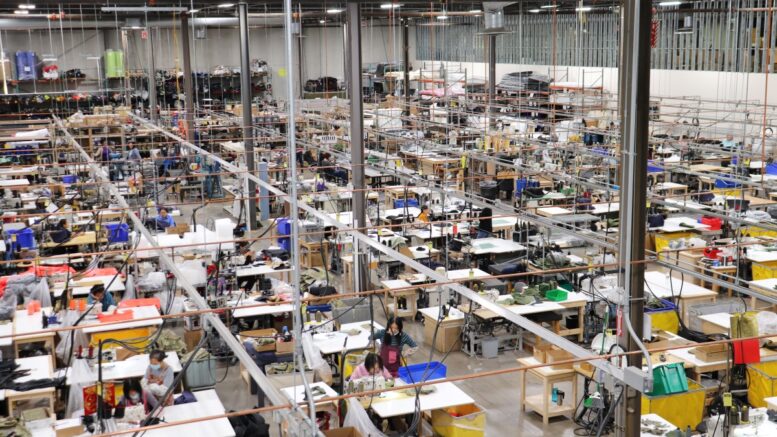What is Industrial Sewing?
Industrial sewing is the large-scale, high-precision manufacturing of sewn products using specialized machinery and skilled operators. Unlike home sewing, which focuses on small-batch, handcrafted projects, industrial sewing is designed for mass production, ensuring efficiency, consistency, and durability across thousands of units.
Businesses across medical, military, aerospace, automotive, and commercial sectors rely on industrial sewing for high-quality, scalable production. Whether it’s manufacturing protective gear, technical bags, or specialized transport cases, industrial sewing is at the heart of quality-driven, high-volume sewn product manufacturing.
Fieldtex Cases vs. Other Industrial Sewing Companies: Key Differences
While many companies focus on transitioning from home sewing to mass production, our company operates at an entirely different scale. Most sewing companies range from 5 to 50 employees, whereas our factory has 186 employees, 125 of whom are sewing machine operators. This significant workforce allows us to handle large-scale projects that smaller facilities simply cannot manage.
| Feature | Fieldtex Industrial Sewing | Typical Sewing Company |
|---|---|---|
| Scale | High-volume sewn product manufacturing | Small-batch production |
| Speed | Automated & high-speed | Slower, manual processes |
| Workforce | 186 employees, 125 operators | 5-50 total employees |
| Project Capacity | Large-scale, time-sensitive orders | Limited batch production |
The Industrial Sewing Process: How Large-Scale Production Works
1. Design & Material Selection – Customizing designs based on function, durability, and client specifications. 2. Cutting & Fabric Prep – automated or die cutting ensures precise, high-volume material preparation. 3. Industrial-Grade Stitching – Specialized machines handle various stitch types for strength and longevity. 4. Quality Control & Finishing – Rigorous testing for durability, compliance, and consistency. 5. Packaging & Logistics – Efficient order fulfillment and bulk shipping solutions.
Case Study: Scaling Vaccine Transport Cases During the COVID-19 Pandemic
At Fieldtex, we specialize in industrial sewing solutions for high-demand, time-sensitive projects. One of our most critical projects was during the COVID-19 pandemic when vaccine distribution required rapid, large-scale production of refrigerated transport cases.
Prior to the pandemic, we worked with the medical refrigeration company manufacturing these cases in small quantities. However, when Pfizer and Moderna introduced the first COVID-19 vaccines, their demand for these cases surged overnight to needing thousands of these transport cases. These cases were used to deliver vaccines to every drugstore in America.
Challenges & Solutions
✅ Extreme Durability: The cases had to withstand sub-zero temperatures to protect the vaccines during transport. We sourced specialized cold-resistant fabrics and reinforced insulation. ✅ Rapid Scaling: Production surged from small-batch orders to thousands in a short window of time. We tweaked our factory workflow to meet the demand. ✅ Precision & Quality: Each case had fabric walls, foam lining, and reinforced shoulder straps to support vaccine transport, requiring high production standards.
Thanks to our industrial sewing expertise, we successfully scaled production, ensuring that vaccine distribution stayed on schedule. This project showcased how agile manufacturing and industrial sewing capabilities can adapt to urgent, high-volume needs.
Why Partner with Us for Your Industrial Sewing Needs?
- Larger Workforce & Capacity: With 186 employees and 125 sewing operators, we can handle high-volume production that smaller facilities simply can’t manage.
- Expertise in Heavy-Duty Sewing: Our team has experience producing heavy-duty sewn products for demanding industries.
- Reliability: Decades of experience in the sewing industry, ensuring top-tier quality control.
- Customization: Tailored sewing solutions for diverse industries.
- Scalability: Ability to ramp up production as demand grows.
- Sustainability: Eco-friendly materials and lean manufacturing.
Get Started with Industrial Sewing for Your Business
If your business requires high-quality, scalable industrial sewing solutions, we’re here to help.
📞 Contact us today for a quote and see how we can support your production needs!

